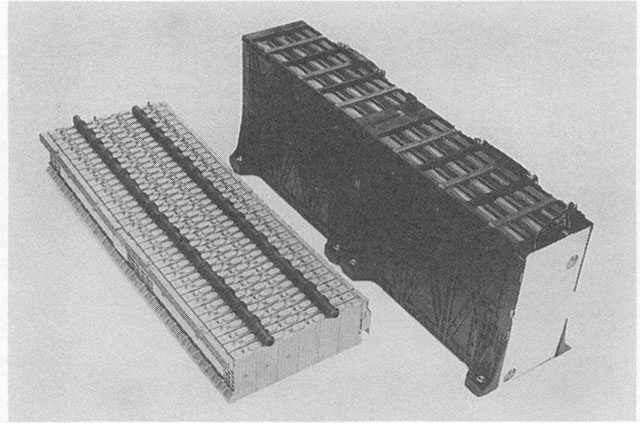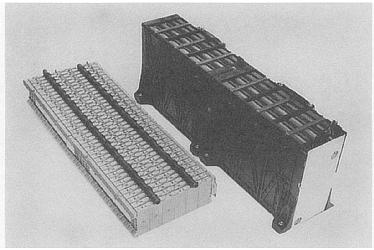Oct. 08, 1999
Toyota Develops Compact Battery for Hybrids
Tokyo―TOYOTA MOTOR CORPORATION (TMC) announced today that it has teamed up with Panasonic EV Energy Co., Ltd., to develop a compact, high-performance nickel-metal hydride battery for use in hybrid cars.
The new battery is expected to take up 40% less space in a hybrid car than current nickel-metal hydride batteries, with 20% less mass. This has allowed Toyota to come up with a dramatically more compact battery design.
In the configurations currently used in hybrid cars, six cylindrical nickel-metal hydride batteries (1.2V) are arranged in series within a 7.2V cylindrical module. In the Prius hybrid car, 40 of these modules are connected in a series to provide the 288 V necessary to power the vehicle.
The basic design of the new battery is rectangular, with six of these 1.2V units included in a single "square module." The square design eliminates the need for the support structure, or holder, which is generally required to keep cylinders aligned. The square modules are simply stacked, for a lighter, simpler configuration. Moreover, a small gap is maintained between the square modules for flow of coolant air. This gap is much smaller than the gap between the cylinders in the previous design, and this greatly reduces the volume occupied by the batteries.
At the same time, improvements in the configuration and materials used in the battery plate have led to improved energy density and output density―as shown in the measure of performance per unit of weight―further enhancing the performance of the battery design.
Production of the new battery is slated to begin next year. The compact battery is expected to contribute to improved space utility in coming hybrid cars, providing greater luggage space. Since the new battery can also be used in fuel cell hybrid vehicles (FCHVs), in which the engine is replaced by a fuel cell, this development is expected to contribute to earlier commercialization of FCHVs.

New design (38 modules) and currently used design (40 modules)
Related Contents
- Toyota Introduces New Hybrid System (Attachment 1)
- Toyota Develops New Fuel Cell Components (Attachment 2)





